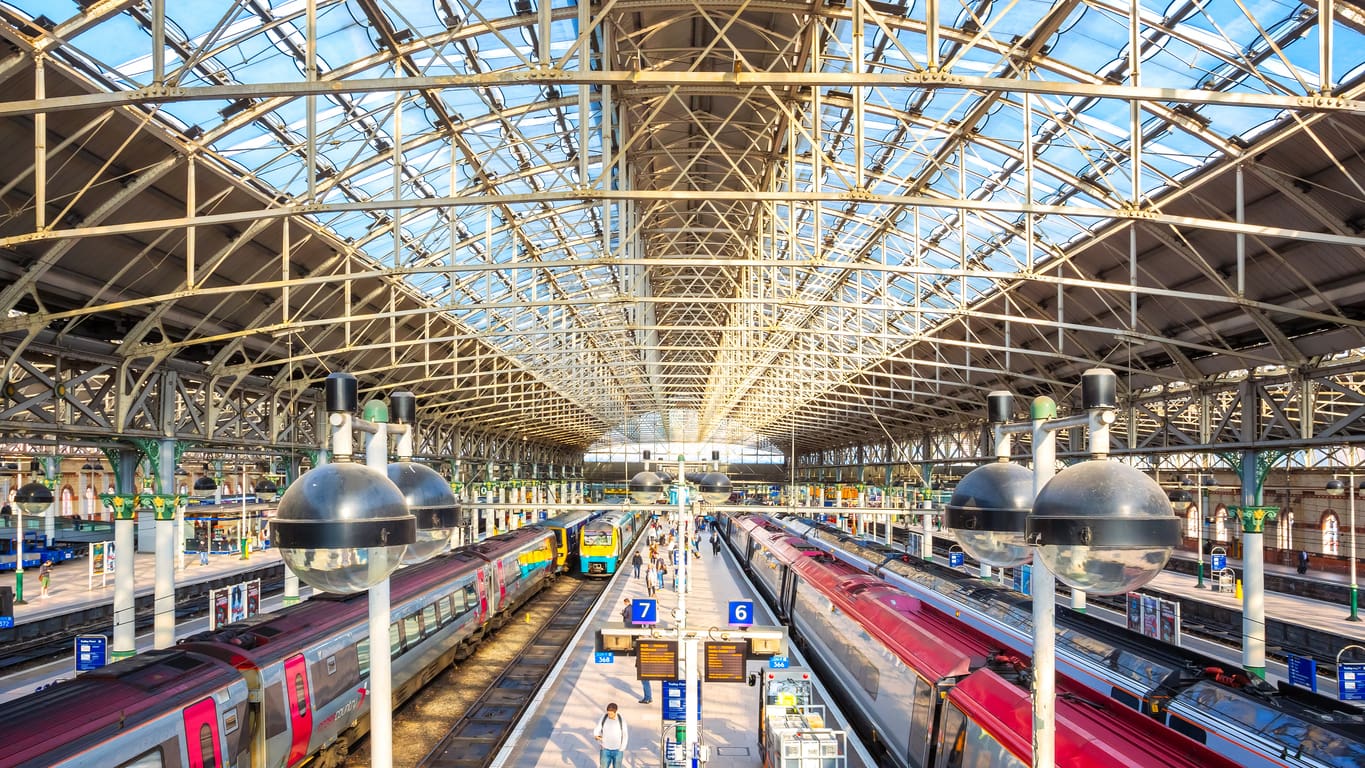The Department for Transport has set out the next steps of Northern Powerhouse Rail, with more connections through Manchester Airport and Liverpool planned
Local leaders and MPs expressed support for Northern Powerhouse Rail to serve Warrington Bank Quay and Manchester Airport and for using broadly the previously proposed route between Liverpool and Manchester.
Taking account of local views, this will be the primary option for the next stage of development for the route between Liverpool and Manchester.
The government will continue to assess alternatives that meet the objectives of Northern Powerhouse Rail in line with standard requirements for business case approvals.
The new Northern Powerhouse Rail plans include:
- Quicker, more frequent services, meaning the route between Liverpool and Manchester Piccadilly would be reduced from around 50 minutes to 35 minutes
- Trebling capacity between Liverpool and Leeds, offering 2,100 extra seats per hour in each direction
- Stations at Warrington and Manchester Airport to be served as part of Northern Powerhouse Rail as well as increased progress on the new station at Bradford.
Manchester Airport is a focal point of the plans
Local leaders and MPs asked for further options to be explored around the station design at Manchester Piccadilly and the approach into Liverpool.
With this plan, Liverpool and Warrington, as well as towns in the east of the Pennines, could benefit from direct services to Manchester Airport. Passengers travelling there from Liverpool could see their journeys to the airport slashed by almost an hour while passengers from Leeds could benefit from a 41-minute reduction.
A Northern Powerhouse Rail station in Warrington could also support local regeneration ambitions, providing a vital transport interchange in its town centre and making it easily accessible by boosting its links to neighbouring cities.
A further £35m has also been released, allowing Network Rail to take forward early design and engineering work to unlock the next phase of Northern Powerhouse Rail between Liverpool and Leeds. The funding will allow vital projects, such as the new station in Bradford, to be progressed at pace.
Transport Secretary, Mark Harper, said:
“Today, we are setting out the next steps for how we can transform east-west rail links in the North, helping to boost economic growth between key Northern cities as part of our Network North plan.
“I thank local leaders and local MPs for sharing their views and facilitating constructive conversations. I have heard a clear consensus, which means we can now take another crucial step towards delivering Northern Powerhouse Rail, part of this government’s plan to boost rail capacity, deliver faster journey times and offer better connectivity across the North.”
The news follows the controversial cancellation of Manchester’s HS2 leg
Prime minister Rishi Sunak announced in October 2023 that HS2 would end at Crewe, rather than reaching up to Manchester. A new “Network North” would take its place, supposedly investing in strengthing existing rail connections in the North of England.
Metro Mayors in Greater Manchester and the Liverpool City Region are also benefitting from more than £1.7bn from the City Region Sustainable Transport Settlement (CRSTS) from now until 2027 and have been allocated an additional £4 billion from 2027 until 2032 to improve transport across the region, funded in part from reallocated HS2 funding.
The progress on Northern Powerhouse Rail follows £2.5 billion of reallocated HS2 funding invested directly into the North through the Local Transport Fund to improve local transport connections for more people, in more places, more quickly.
“Unlocking the full potential of the Northern economy”
Ken O’Toole, CEO of Manchester Airports Group (MAG), said: “This is an important step forward on the journey towards unlocking the full potential of the Northern economy.”
“Delivering Northern Powerhouse Rail will help maximise the contribution Manchester Airport makes to rebalancing the UK, helping attract up to 50 new long haul routes and increasing its annual economic impact to £16.2bn by 2050.
“We look forward to working with government and regional partners to drive this vision forward.”




![[VIDEO] HS2 completes 4,600-tonne viaduct slide across M6 The HS2 team completed a 17-hour long operation sliding the viaduct structure across the M6 without closing the motorway](https://www.pbctoday.co.uk/news/wp-content/uploads/2025/12/M6-South-viaduct-slide-taking-place-across-a-live-motorway-December-2025-218x150.jpg)









![[VIDEO] Heathrow’s third runway plan wins out over Arora London, United Kingdom – May 31, 2023: A commercial airliner taking off at London's Heathrow Airport, representing plans for a third runway](https://www.pbctoday.co.uk/news/wp-content/uploads/2025/11/iStock-2143084103-218x150.jpg)